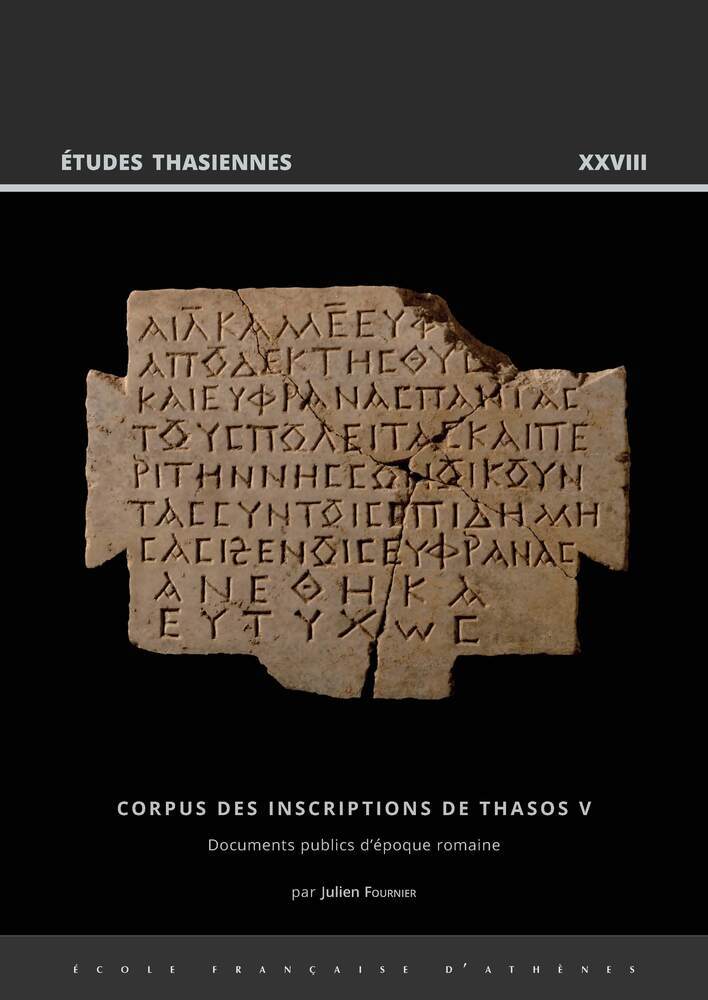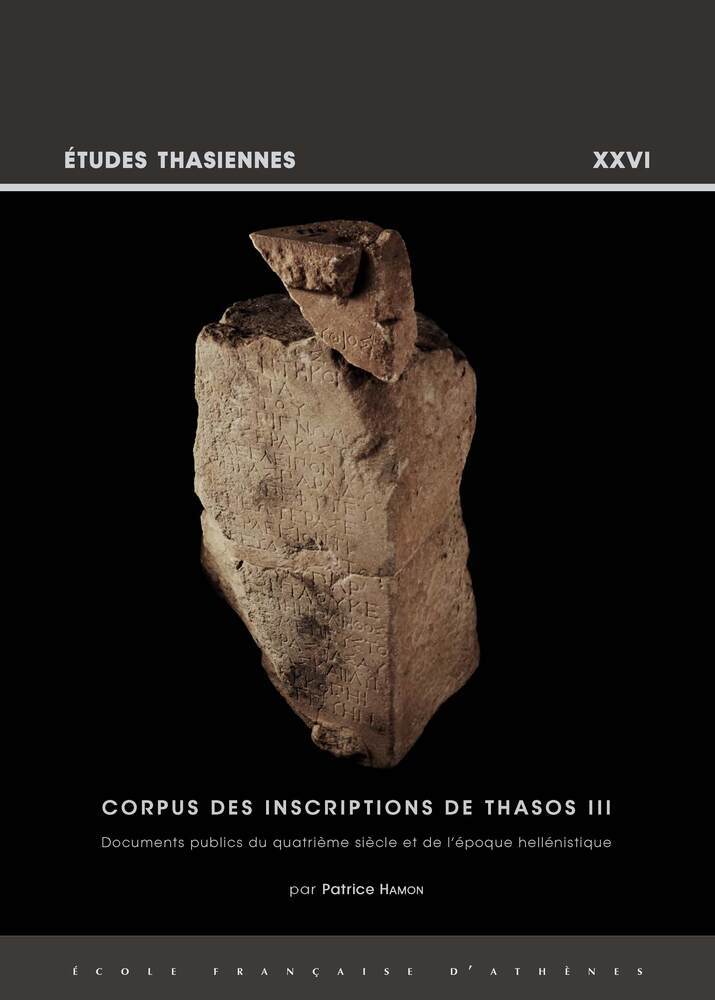Les études ici proposées renouvèlent entièrement notre connaissance de deux ensembles de statues en marbre découvertes jadis à Thasos. Il est exceptionnel qu’en soient conservés également les inscriptions qui expliquent leur raison d’être et le cadre architectural qui les mettait en valeur tout en les protégeant, dans deux sanctuaires majeurs de la cité. Au Dionysion, pour commémorer un récital où se produisit la fine fleur des artistes de l’époque, on fit appel, dans le troisième quart du IVe siècle av. J.-C., à un atelier attique pour réaliser un groupe d’une grande originalité, qui rassemble auprès de Dionysos les personnifications de genres musicaux représentés par ordre d’importance. A‘ l’Artémision, on réunit à partir de l’époque d’Auguste, sous un élégant portique construit pour l’occasion, des statues honorifiques de femmes, dont les plus anciennes sont également de facture attique. L’occasion est ainsi fournie de comprendre ces offrandes remarquables dans toute leur complexité.
These studies give an entirely new perspective on two groups of marble statues that were discovered in Thassos at the beginning of the 20th century. Exceptionally, the inscriptions explaining the reason for their creation have survived, as has their architectural setting in two of the city’s major sanctuaries, which both enhanced their prestige and kept them protected. In the third quarter of the 4th century B.C., in order to commemorate a recital by the finest artists of the time, an Attic sculpture workshop was called on to create a highly original group of statues for the sanctuary of Dionysus depicting the different genres of music personified in order of importance around the god. In the sanctuary of Artemis, statues honouring women, the oldest of which are of Attic workmanship, were progressively put on display during the 1st century A.D. under an elegant portico specially built for the occasion. This publication casts new light on these remarkable offerings in all their complexity.









